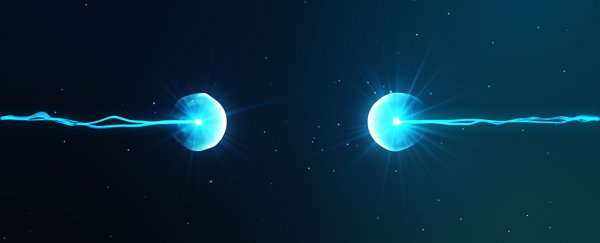Researchers have tracked special interactions between electrons and crystal lattices inside superconducting metals for the first time.
It might not sound like much to the casual observer, but it promises to help radically transform the technology of the future – including quantum computers.
Here's why: superconductors allow electricity to flow through them with zero resistance, transferring currents at faster speeds and with less energy loss than the silicon chips used in the gadgets of today.
That opens up the possibility of gadgets that work faster, last longer, and are many times more powerful than we're used to.
For now though, they're still a work in progress. The underlying science of being able to manipulate energy through superconductors is incredibly complex, due to the delicate dynamics and subatomic scales involved, but the new research observed superconductivity at a level of precision we haven't seen before.
 The Brookhaven/Stony Brook team. (Brookhaven National Laboratory)
The Brookhaven/Stony Brook team. (Brookhaven National Laboratory)
"This breakthrough offers direct, fundamental insight into the puzzling characteristics of these remarkable materials," says senior researcher Yimei Zhu, from the Brookhaven National Laboratory in New York.
"We already had evidence of how lattice vibrations impact electron activity and disperse heat, but it was all through deduction. Now, finally, we can see it directly."
One of the benefits of the new research could be overcoming the big issue with superconductors – that they have to be cooled to very low temperatures to work effectively.
The breakthrough can also teach scientists more about how superconductors behave, in this case inside copper-oxide superconductors.
By using ultra-fast electron diffraction and photoemission spectroscopy techniques, the team was able to observe changes in the energy and momentum of electrons passing through the metal, as well as changes in the metal at the atomic level.
The experiments involved blasting pulses of light at a bismuth-based compound, split up into 100-nanometre samples with simple Scotch tape. By adding spectroscopy analysis as well, the scientists could monitor electrons within the material in response to laser light.
In normal materials, electron (and electricity) flow is disrupted by defects, vibrations, and other characteristics of its crystal lattice or inner structure. We know that electrons in superconductors can overcome this by pairing up, but now we've got a closer look at it.
"We found a nuanced atomic landscape, where certain high-frequency, 'hot' vibrations within the superconductor rapidly absorb energy from electrons and increase in intensity," says one of the researchers, Tatiana Konstantinova from Stony Brook University in New York.
"Other sections of the lattice, however, were slow to react. Seeing this kind of tiered interaction transforms our understanding of copper oxides."
These atomic interactions are happening incredibly quickly too, on the scale of million billionths of a second, which makes the task of tracking them even harder. Once we understand these actions better, the ultimately goal is to manipulate them.
The researchers compare the movement of electrons to water flowing through a tree, up from the roots. Electrons will only interact with certain 'roots' in a crystal lattice – they're technically known as phonons, atomic vibrations with specific frequencies.
"Those phonons are like the hidden, highly interactive roots that we needed to detect," says Konstantinova.
And by combining the diffraction and spectroscopy processes, the scientists were able to spot where these particular vibrations were happening and the effect they were having, revealing the 'roots' of the reactions.
For example, the high-frequency vibrations increased their amplitude first in reaction to energy from electrons, while the amplitude of the lowest-frequency vibrations increased last. This showed the sample reacts differently to energy induced from light than from heat.
All of this data is helpful in progressing our understanding of superconductivity.
"Both experimental techniques are rather sophisticated and require efforts of experts across multiple disciplines, from laser optics to accelerators and condensed matter physics," says Konstantinova.
"The calibre of the instruments and the quality of the sample allowed us to distinguish between different types of lattice vibrations."
The research has been published in Science Advances.
